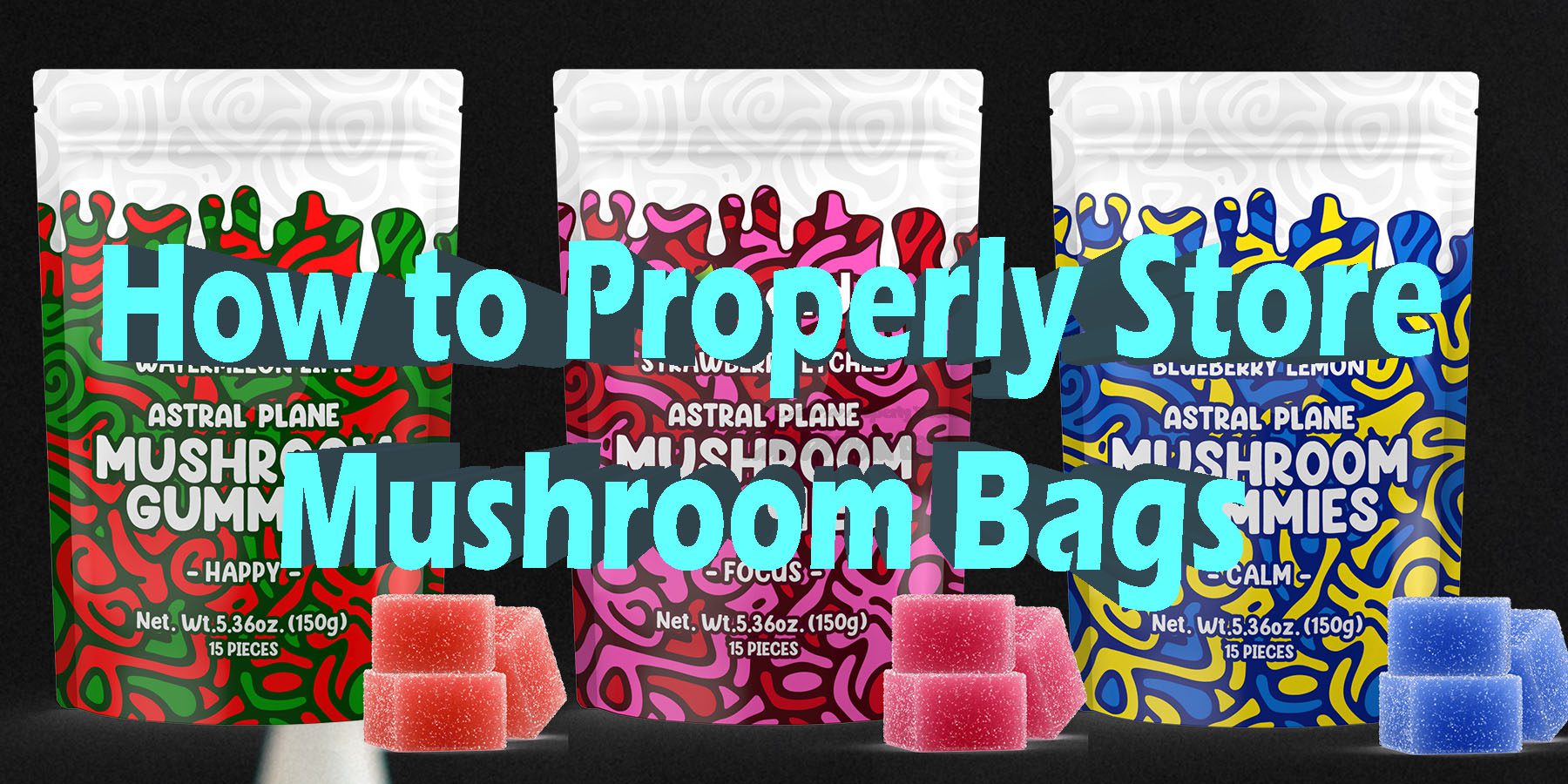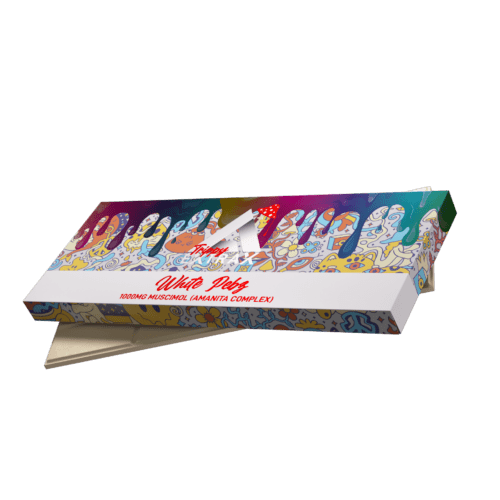
How To Buy The Right Mushroom Grow Kit
Mushroom grow kits offer a legal way to enjoy mushrooms, providing everything that mushroom enthusiasts need to grow these mushrooms at home. These super user-friendly, almost failproof kits consist of a substrate (growing medium), which can be inoculated with either mushroom spores or liquid cultures, both served up in a sterile syringe. Because mushrooms don’t develop psilocybin until they’re mature, sales of mushroom grow kits are totally compliant with the law.
When the time comes to purchase your own mushroom grow kit, you have two options as far as the genetics are concerned: spores or liquid cultures. While they look identical to one another (again, both come in a syringe), they’re quite different, and cannot be used interchangeably. So, let’s compare the two, to help you decide which option you prefer.
To Buy Mushroom Products Click Here
-
Product on sale
 Astral Plane Mushroom Gummies$29.99
Astral Plane Mushroom Gummies$29.99$44.99 -
Product on sale
 Mushroom Disposable Vapes – 3 Gram$37.99
Mushroom Disposable Vapes – 3 Gram$37.99$49.99 -
Product on sale
 Mushroom Gummies – Microdose$37.99
Mushroom Gummies – Microdose$37.99$49.99
How Do Mushroom Syringes Work?
Basically, any mushroom grow kit requires one simple process in order to allow spores to grow into beautiful, mature mushrooms: the substrate, or growing medium, must be inoculated. From there, the conditions within the environment are maintained so that the spores can begin their new life cycle.
By selling mushroom spores and liquid cultures in syringes, the contents can remain sterile, which is a critical function of safety. And, this also makes them easy to work with – simply inject the substrate with the contents of the syringe, and the process begins, without any concern of spilling or wasting.
As you’re about to learn, spore and liquid culture syringes are great for inoculating your substrate. Both forms of mushroom genetics are effective, easy to use, and fully capable of giving you the results you want.
So, what’s the difference between them?
Liquid Culture Syringes
A liquid culture syringe contains very small, microscopic pieces of mycelium, which is the root structure of a mushroom. This means that the spores have already germinated (aka sprouted), and hence, begun the process of growing into mushrooms. Basically, by choosing liquid cultures, you don’t have to go through the process of allowing the spores to germinate, which means that you’ll save time, as the mushrooms will mature sooner after inoculation. Of course, it also means that you don’t have to worry about the germination process failing, as that part of the life cycle has already been done for you.
A liquid culture syringe combines mycelium pieces with a sterilized liquid that’s high in nutrients, so that the mycelium can feed as it grows. The mycelium is actually growing and reproducing as it sits inside the syringe.
Liquid Culture Pros:
- You will get mature mushrooms sooner as the germination process has already been done.
- One less step to worry about, for an overall lower risk of failure.
- Liquid cultures can be selected based on genetics, to better ensure the ideal yield.
Liquid Culture Cons
- They require refrigeration in order to remain stable for up to 8 months.
All in all, liquid cultures are ideal for those who want consistent results, having found the ideal genetics for their needs. With liquid cultures, as germination has already occurred, you’re basically guaranteed the same results each time you inoculate.
Spore Syringes
Spore syringes contain mushroom spores suspended in a solution of sterilized, distilled water. Spores can be compared to seeds, as they represent the very first phase of a life cycle, and also must be germinated in order to begin the developmental process. In order for germination to occur, two genetically compatible spores must meet – this is not the case with seeds, and so there is a somewhat higher risk of failure. Spore syringes sold for mushroom grow kits contain a variety of genetic lineages to allow germination to occur after inoculation.
Spore Syringe Pros:
- Far more shelf stable than liquid cultures – doesn’t require refrigeration.
- Wide array of genetics within each syringe.
- Can be transported easily due to its stability.
Spore Syringe Cons:
- Generally, requires more time as the germination process must occur.
- A somewhat higher risk of failure due to the required added step of germination.
Essentially, by opting for spores over liquid cultures, you’re able to explore which genetics are compatible with your environment. You can explore different strains of mushrooms and see which ones are a good fit for you based on factors like light, temperature, and humidity that exist in your home.
Where Do Multi-Spore Syringes Fit in?
Now, here’s where you might get a little confused. Multi-spore syringes are becoming popular, and they are syringes that can contain either spores or liquid cultures (yes, both exist) which feature multiple genetic lineages inside. They still contain a single strain, but they contain multiple genetic lineages of that one strain – sort of comparable to phenotypes of cannabis strains, if you will.
The standard spore syringes on the market contain thousands to millions of individual genetic lineages. This means that if germinated as is, once the mycelium develops, it consists of several unique genetic lineages that are in competition with one another. From there, a liquid culture syringe is made by isolating the most successful genetic lineage to secure a good yield. Failing to isolate would leave you with a multi-spore liquid culture syringe, in which competition could interfere with the desired size of your yield.
What is the Spawn-to-Bulk Ratio?
The concept of spawn-to-bulk ratio is an important one. Primarily, this is the ratio of spawn (what’s inside the syringe) to bulk (the substrate), and it’s measured in volume rather than weight. A high ratio – like 1 part spawn to 8 parts bulk – will offer a higher yield, but still requires more time to colonize due to the far spread, and the longer the colonization time, the higher risk of failure due to contamination and loss. That’s why newbies are always encouraged to go with a lower ratio, which means less yield, but also less risk of failure. Keep in mind that with a lower ratio, you will also increase the chance for multiple flushes, which can make up for the lower yields.
The Choice of Genetics to Infused into Your Mushrooms is Yours!
Ultimately, whether you go with liquid cultures or spores is completely up to you. As you can see, they each provides a simpler way to grow your own mushroom varieties at home, and it’s just a matter of picking which of the two options is compatible with what you’re trying to achieve. Liquid cultures are the easier choice, but there is definitely a time and a place for going with spores instead. For the most part, we suggest you really go over these pros & cons to know what to expect from both methods, keeping in mind that liquid cultures are generally viewed as the more beginner-friendly option.
To Buy Mushroom Products Click Here
-
Product on sale
 Mushroom Gummies Berry Snow Cone – Microdose$37.99
Mushroom Gummies Berry Snow Cone – Microdose$37.99$49.99 -
Product on sale
 Mushroom Gummies Trippy Tropical – Microdose$37.99
Mushroom Gummies Trippy Tropical – Microdose$37.99$49.99 -
Product on sale
 Mushroom Gummies Comic Candy- Microdose$37.99
Mushroom Gummies Comic Candy- Microdose$37.99$49.99










